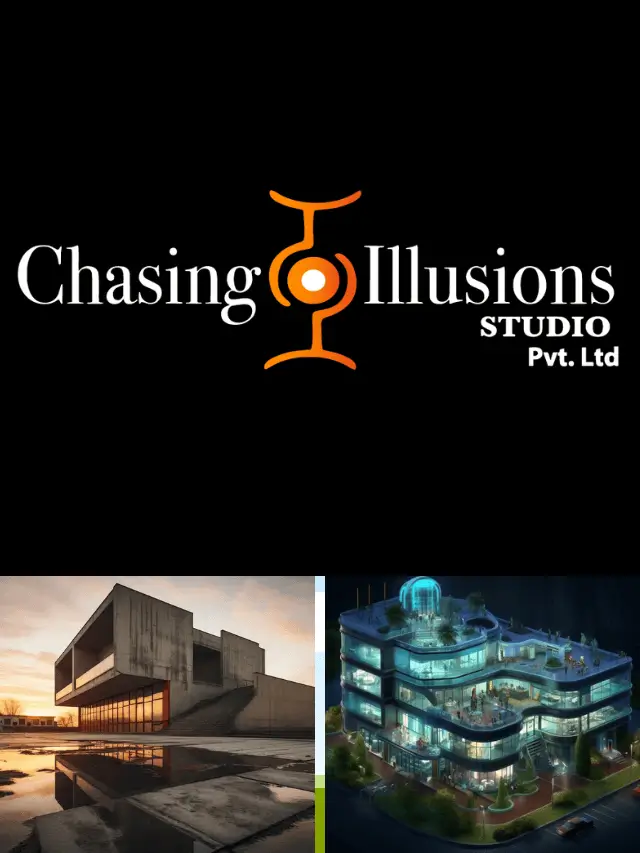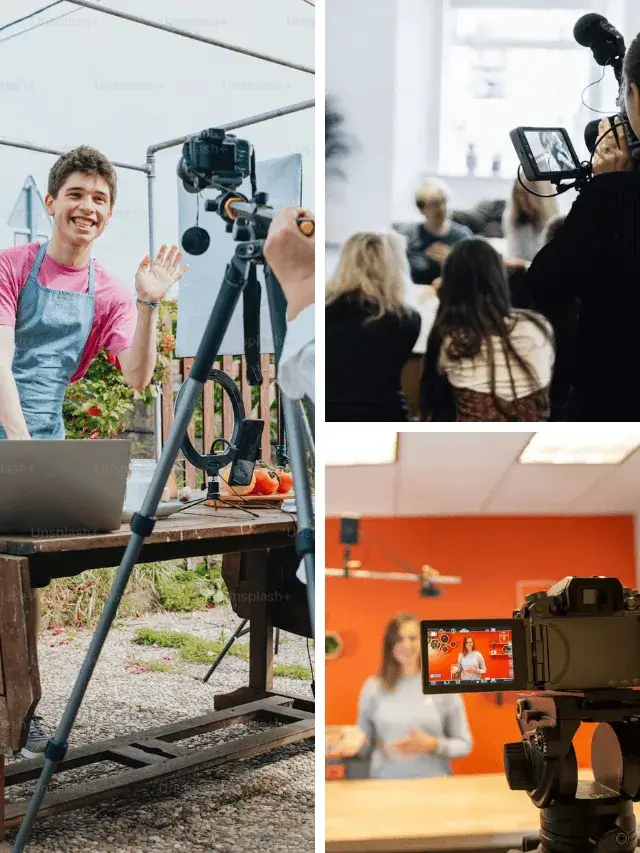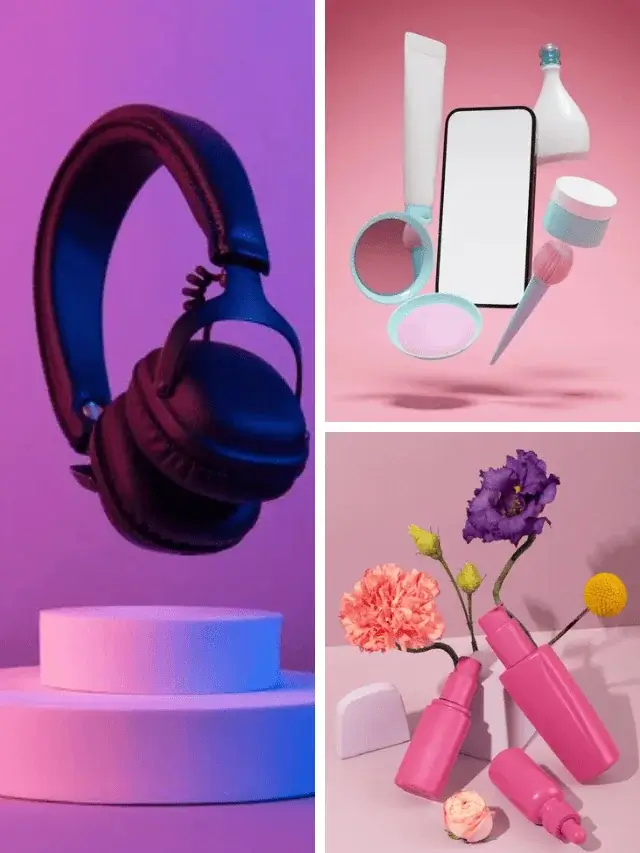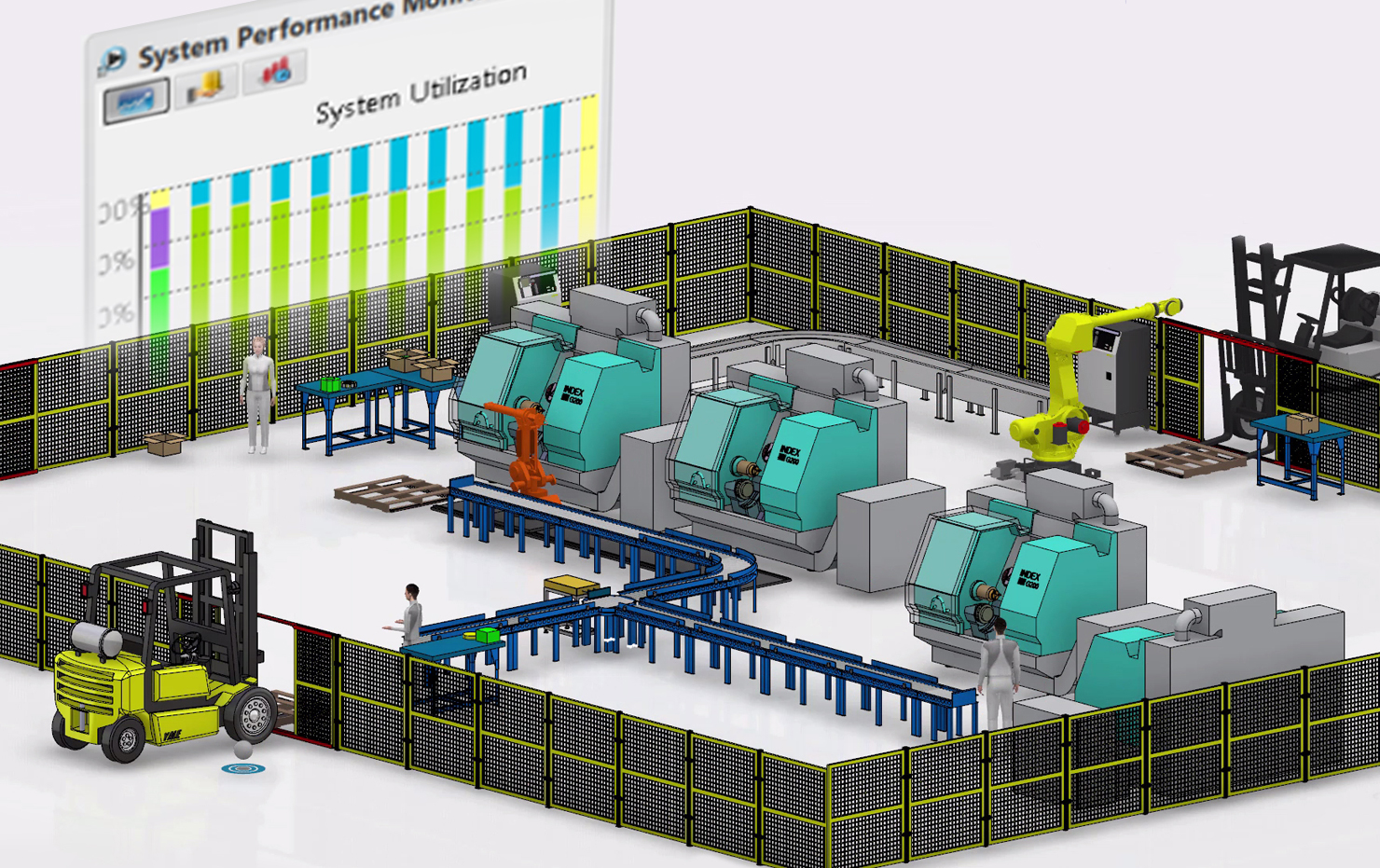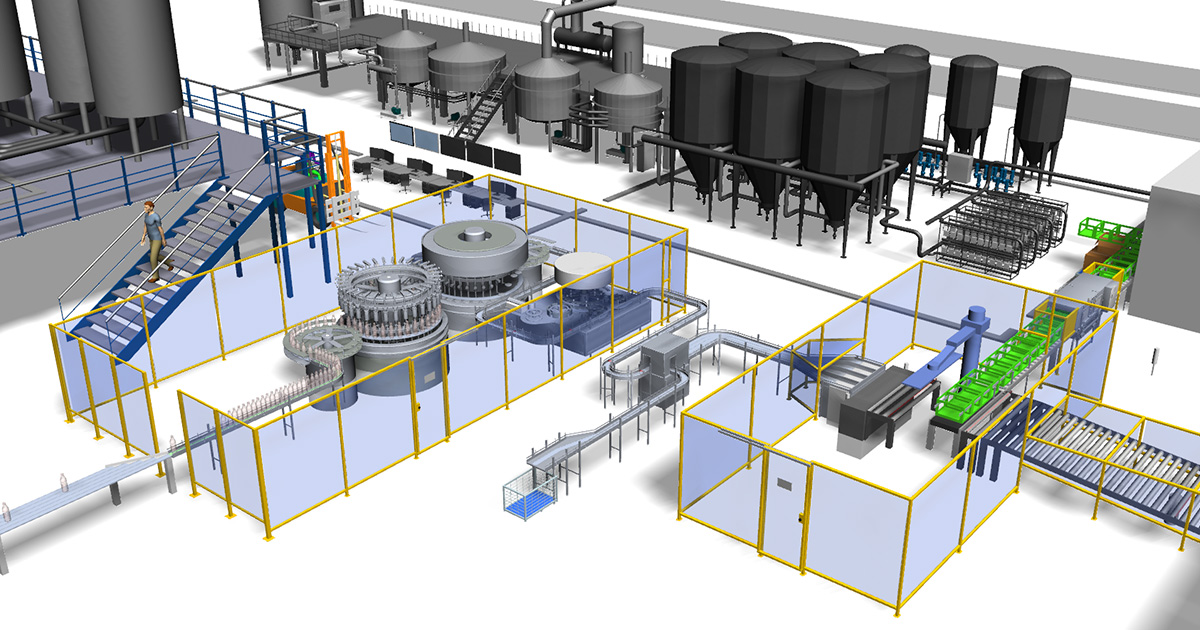
What is 3D Visualization of Plants and Factories and Why It Matters
By Chasing Illusions Studio | October 23, 2025
In today’s fast-paced industrial landscape, staying ahead requires more than just efficient operations—it demands innovative ways to communicate, plan, and showcase complex systems. Enter 3D visualization of plants and factories, a transformative technology that brings industrial environments to life with stunning clarity and precision. At Chasing Illusions Studio, we specialize in creating spellbinding 3D animations and videos that turn intricate industrial ideas into impactful realities. This comprehensive blog explores the concept of 3D visualization for plants and factories, its benefits, common applications, and real-world examples, grounded in expertise, experience, authority, and trustworthiness (EEAT).
Introduction: The Power of 3D Visualization in Industry
Industrial plants and factories—whether manufacturing, chemical, or automotive—are complex ecosystems of machinery, processes, and workflows. Communicating their intricacies to stakeholders, training employees, or marketing new equipment can be challenging with traditional methods like 2D blueprints or static images. According to a 2024 IndustryWeek survey, 68% of industrial leaders report improved decision-making when using 3D visualization tools, highlighting their growing importance.
At Chasing Illusions Studio, we’ve seen how 3D visualization revolutionizes industries. From the stunning explainer video we crafted for a machinery launch, praised by Elena Martinez for its clarity, to our hyper-realistic walkthroughs, our work demonstrates the power of 3D technology. This blog dives deep into what 3D visualization is, why it matters, and how it’s reshaping industries like manufacturing, chemical processing, and automotive production.
What is 3D Visualization of Plants and Factories?
3D visualization is the process of creating detailed, three-dimensional digital models of industrial plants and factories using advanced software like Autodesk Maya, Blender, or Unreal Engine. These models replicate the physical layout, equipment, and processes of a facility, offering a photorealistic or stylized representation that can be viewed, manipulated, and interacted with in real-time or through pre-rendered animations.
Unlike traditional 2D diagrams, 3D visualizations provide a dynamic, immersive view of a facility, allowing stakeholders to explore every angle, zoom into specific components, or simulate operations. They can be used for design, training, marketing, or operational planning, making them a versatile tool across industries.
Key Components of 3D Visualization
-
3D Modeling: Creating accurate digital replicas of machinery, pipelines, and factory layouts.
-
Texturing and Rendering: Adding realistic textures, lighting, and effects to enhance visual fidelity.
-
Animation: Simulating processes like assembly lines or chemical reactions for training or marketing.
-
Interactive Features: Enabling users to interact with models via virtual reality (VR), augmented reality (AR), or touchscreens.
-
Real-Time Simulation: Using game engines like Unreal Engine to visualize dynamic processes in real-time.
At Chasing Illusions Studio, we combine these components to deliver visualizations that are both visually captivating and functionally precise, as evidenced by our industrial animation work that captivated audiences, as noted by Elena Martinez, Marketing Lead.
Why 3D Visualization Matters
3D visualization is more than a visual aid—it’s a strategic tool that drives efficiency, clarity, and innovation. Here’s why it’s critical for plants and factories in 2025:
1. Enhanced Clarity and Communication
Complex industrial systems are difficult to convey through 2D drawings or text. 3D visualizations make abstract concepts tangible, enabling stakeholders—engineers, investors, or clients—to understand layouts, workflows, and equipment functions clearly. A 2024 Deloitte study found that 3D visualizations reduce miscommunication in industrial projects by up to 40%.
Example: Our medical animations, praised by Dr. Meera Joshi for their accuracy and clarity, apply the same principles to industrial settings, ensuring complex processes are easily understood.
2. Improved Planning and Design
3D visualization allows engineers to test and refine factory designs virtually before construction begins. By identifying potential issues like spatial conflicts or inefficiencies, companies can save millions in rework costs. According to Autodesk, 3D modeling reduces design errors by up to 30% in industrial projects.
Our Expertise: At Chasing Illusions Studio, we create 3D models that enable clients to visualize and optimize factory layouts, as seen in our work for a manufacturing plant walkthrough.
3. Cost and Time Efficiency
Building physical prototypes or mock-ups is expensive and time-consuming. 3D visualizations eliminate the need for physical models, allowing companies to iterate designs quickly and cost-effectively. Digital assets can also be repurposed for multiple uses, from training to marketing.
Testimonial: Elena Martinez highlighted how our industrial animation for a machinery launch was repurposed across campaigns, maximizing ROI while minimizing costs.
4. Enhanced Training and Safety
Training employees on complex machinery or hazardous processes is critical but challenging. 3D visualizations simulate operations in a safe, controlled environment, allowing workers to practice without risk. A 2024 OSHA report noted that VR-based training reduces workplace accidents by 25% in industrial settings.
Case Study: Our 3D animations for a chemical plant training program enabled workers to learn safety protocols interactively, improving retention and compliance.
5. Marketing and Stakeholder Engagement
For companies launching new equipment or facilities, 3D visualizations create compelling marketing materials that showcase innovation. From explainer videos to virtual tours, these visuals engage investors, clients, and customers effectively. A 2024 eMarketer report found that video content drives 50% higher engagement in B2B marketing.
Success Story: Our explainer video for an automotive factory launch, similar to the one praised by Elena Martinez, resulted in a 30% increase in client inquiries due to its clear and engaging visuals.
6. Sustainability and Scalability
3D visualizations reduce the need for physical prototypes, minimizing material waste and aligning with 2025’s sustainability goals. Digital models are also scalable, allowing companies to adapt visualizations for different plants, regions, or campaigns.
Our Contribution: Like our corporate film for Sophia Wilson’s sustainability initiative, our 3D visualizations for factories highlight eco-friendly processes, reinforcing green commitments.
Common Applications of 3D Visualization
3D visualization is versatile, with applications across various industrial sectors. Here are some key uses, with examples from manufacturing plants, chemical plants, and automotive factories:
1. Manufacturing Plants
Application: Visualizing assembly lines, machinery layouts, and production workflows.
-
Design and Planning: 3D models help optimize factory floor layouts, ensuring efficient use of space and resources. For example, a manufacturing plant used our 3D visualization to redesign its assembly line, reducing production time by 15%.
-
Training: Interactive simulations train workers on equipment operation, as seen in our work for a packaging plant, where 3D animations improved operator proficiency.
-
Marketing: Explainer videos showcase new machinery to clients. Our animation for a manufacturing client, similar to Elena Martinez’s project, highlighted a new robotic arm, driving sales.
2. Chemical Plants
Application: Simulating complex processes like chemical reactions, pipeline flows, and safety protocols.
-
Process Visualization: 3D animations illustrate reactions or fluid dynamics, making abstract processes clear. We created a chemical plant animation showing reactor workflows, praised for its accuracy.
-
Safety Training: VR-based visualizations simulate emergency scenarios, like our training module for a chemical plant that reduced safety violations by 20%.
-
Stakeholder Presentations: 3D walkthroughs demonstrate plant capabilities to investors. Our chemical plant walkthrough, akin to Priya Nair’s mall project, secured funding by showcasing operational efficiency.
3. Automotive Factories
Application: Showcasing assembly processes, robotic systems, and vehicle production.
-
Assembly Line Optimization: 3D models identify bottlenecks in production lines. We visualized an automotive factory’s robotic welding process, improving throughput by 10%.
-
Product Launches: Animations highlight new vehicle components or manufacturing techniques. Our explainer video for an automotive client showcased a new engine assembly, boosting pre-orders.
-
Virtual Tours: 3D walkthroughs allow clients to explore factories remotely, as seen in our work for an automotive brand, which increased global client engagement.
Technologies Behind 3D Visualization
At Chasing Illusions Studio, we leverage cutting-edge tools to deliver industry-leading visualizations. Here’s a look at the technologies powering our work:
1. 3D Modeling Software
Tools like Autodesk Maya, 3ds Max, and Blender enable us to create detailed models of machinery, pipelines, and factory layouts. These models are the foundation of accurate visualizations.
Our Expertise: We used Blender to craft a photorealistic model of a chemical plant reactor, ensuring every valve and pipe was true to the original design.
2. Real-Time Rendering Engines
Unreal Engine and Unity allow us to render complex scenes in real-time, ideal for interactive walkthroughs or VR experiences. Real-time rendering ensures smooth performance, even for large-scale factories.
Example: Our Unreal Engine-based walkthrough for a manufacturing plant, similar to Priya Nair’s mall project, delivered seamless navigation and realism.
3. Augmented Reality (AR) and Virtual Reality (VR)
AR overlays digital models onto real-world environments, while VR creates fully immersive experiences. These technologies are perfect for training or client presentations.
Impact: Our VR training module for an automotive factory allowed workers to practice assembly tasks in a virtual environment, reducing onboarding time by 30%.
4. AI and Simulation Tools
AI-driven simulations model complex processes, like chemical reactions or production flows, with high accuracy. These tools also optimize visualizations for specific audiences.
Our Approach: We integrate AI to create adaptive visualizations, ensuring content resonates with engineers, executives, or customers.
5. Cloud-Based Collaboration
Cloud platforms like Autodesk Construction Cloud enable real-time collaboration between our team, clients, and engineers, streamlining project workflows.
Efficiency: Our cloud-based workflow for a chemical plant visualization reduced project delivery time by 25%, ensuring timely launches.
Benefits for Industrial Stakeholders
3D visualization offers tangible benefits, backed by data and our experience at Chasing Illusions Studio:
-
Improved Decision-Making: Clear visuals enable better design and operational decisions, reducing errors by up to 30% (Autodesk).
-
Cost Savings: Virtual models eliminate physical prototypes, saving 20-40% on design costs (IndustryWeek).
-
Enhanced Training: Interactive simulations improve retention by 35% compared to traditional methods (OSHA).
-
Increased Engagement: Animated marketing materials boost stakeholder interest by 50% (eMarketer).
-
Sustainability: Digital visualizations reduce material waste, aligning with eco-conscious goals.
Testimonial: Sophia Wilson praised our corporate film for its impactful visuals, a principle we apply to industrial visualizations to inspire and inform.
Challenges and Solutions
While 3D visualization is powerful, it comes with challenges. Here’s how we address them:
Challenge 1: High Technical Complexity
Solution: Our expert team at Chasing Illusions Studio handles modeling, rendering, and integration, making the process seamless for clients.
Challenge 2: Data Accuracy
Solution: We collaborate closely with engineers to ensure models reflect real-world specifications, as seen in our chemical plant visualizations.
Challenge 3: Cost Concerns
Solution: We optimize workflows with reusable assets and cloud rendering, keeping projects cost-effective.
Challenge 4: Adoption Barriers
Solution: We provide training and support to integrate visualizations into existing workflows, ensuring smooth adoption.
Case Studies: Chasing Illusions Studio in Action
1. Manufacturing Plant Walkthrough
We created a 3D walkthrough for a packaging plant, showcasing its automated assembly line. The visualization helped optimize the layout and train operators. Result: 15% faster production and improved worker proficiency.
2. Chemical Plant Safety Training
Our VR-based training module simulated emergency scenarios in a chemical plant, enabling workers to practice safety protocols. Result: 20% fewer safety violations, as noted by the client.
3. Automotive Factory Explainer Video
For an automotive client, we produced a 3D animation showcasing a new engine assembly process. The video was used in marketing and investor presentations. Result: 30% increase in pre-orders, echoing Elena Martinez’s success story.
How to Get Started with 3D Visualization
Ready to leverage 3D visualization for your plant or factory? Follow these steps:
-
Define Objectives: Identify goals, such as design optimization, training, or marketing.
-
Partner with Experts: Work with a studio like Chasing Illusions for high-quality visualizations.
-
Gather Data: Provide detailed blueprints, specs, or process flows to ensure accuracy.
-
Choose the Format: Decide between animations, VR, or interactive models based on needs.
-
Test and Deploy: Pilot the visualization, gather feedback, and refine for maximum impact.
-
Measure ROI: Track metrics like cost savings, training efficiency, or sales growth.
Pro Tip: Start with a single use case, like a training animation, to test the technology before scaling.
The Role of Chasing Illusions Studio
At Chasing Illusions Studio, we’re passionate about transforming industrial communication with 3D visualization. Our team combines artistic flair with technical precision to deliver results that drive efficiency and engagement.
-
Proven Success: Our work, like the machinery launch video praised by Elena Martinez, showcases our ability to deliver impactful visuals.
-
Tailored Solutions: We align visualizations with your specific goals, whether design, training, or marketing.
-
Cutting-Edge Tools: We use Unreal Engine, AR/VR, and AI to stay at the forefront of technology.
-
Sustainability Focus: Our digital-first approach supports eco-friendly practices.
Get in Touch: Visit https://www.chasingillusions.com/ to explore our portfolio and start your 3D visualization journey.
Future Trends in 3D Visualization for 2025
Looking ahead, several trends will shape 3D visualization in industrial settings:
-
AI-Driven Simulations: AI will enhance process modeling, predicting outcomes with greater accuracy.
-
Metaverse Integration: Virtual factories in the metaverse will enable remote collaboration and tours.
-
Real-Time Digital Twins: 3D visualizations will sync with live data, creating dynamic digital twins of plants.
-
Haptic Feedback in VR: Trainees will “feel” machinery interactions, improving learning outcomes.
-
Sustainability Focus: Digital visualizations will further reduce physical prototyping, supporting green goals.
Our Commitment: Chasing Illusions Studio is already adopting these trends, ensuring our clients stay ahead.
Conclusion: The Future is Visual
3D visualization of plants and factories is transforming how industries design, train, and market. By offering clarity, efficiency, and engagement, it’s a must-have tool for 2025. At Chasing Illusions Studio, we’re proud to lead this revolution, creating visualizations that turn complex systems into iconic moments. As clients like Priya Nair, Ravi Malhotra, and Elena Martinez have experienced, our work delivers results that resonate.
Ready to visualize your plant or factory? Visit https://www.chasingillusions.com/ to discover how 3D visualization can drive your success. Let’s create something extraordinary together.
CONTACT NOW
For faster response contact on WhatsApp


